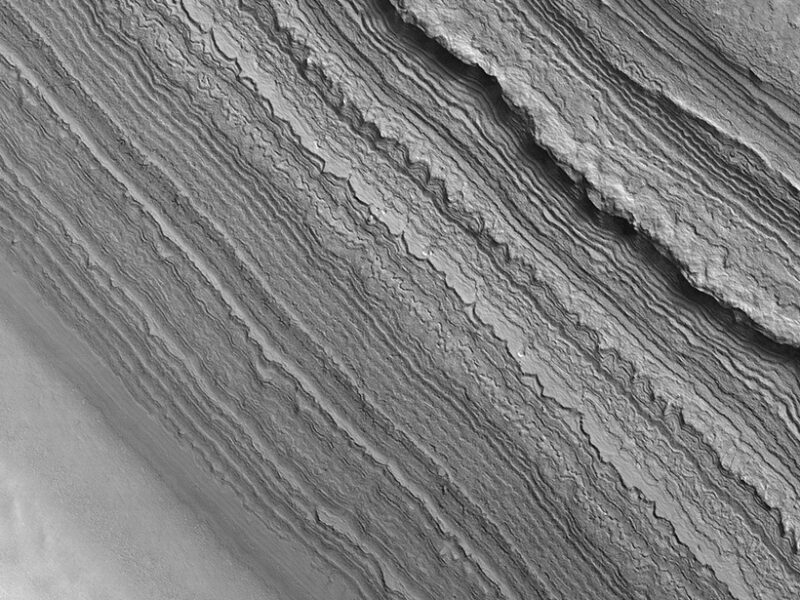
One of Mars’s largest water ice reservoirs, the south polar layered deposits, consists of a thick stack of alternating bands of dust and ice that encompasses an area nearly the size of Alaska. Previous studies have suggested that variations in the obliquity of the Red Planet’s axis, which can wobble up to 10° from its current 25° tilt, have controlled the accretion of these layers and that they therefore preserve a long-term record of Mars’s ancient climate.
Building upon earlier research, which identified four distinct periods of ice accumulation in the south polar deposits, Whitten and Campbell utilize Shallow Radar (SHARAD) data collected by the Mars Reconnaissance Orbiter to investigate the structure and continuity of the deposits’ subsurface layers.
Using a series of new processing techniques to improve the data’s vertical resolution, the team identified three discrete units within the south polar deposits and mapped their areal extents.
Despite a diffuse signal that blurred data below a depth of about 1.1 kilometers, the team was able to laterally trace some units with distinctive radar characteristics, suggesting they could be continuous across the entire region. The researchers found that the majority of the identified units are nearly horizontal, with no observed change in their chemical composition, and the location of unconformities supports a regional depositional pattern. These features led the researchers to conclude that the deposits’ interior is relatively homogeneous.
Collectively, these results suggest Mars’s south polar deposits were emplaced as a single, regional unit rather than as material from multiple centers of deposition that gradually coalesced. By identifying the various units in the south polar layered deposits and helping to clarify their areal relationships, this study contributes to our current understanding of this potential resource and provides a crucial step in helping to unravel the Red Planet’s climate history. (Journal of Geophysical Research: Planets, https://doi.org/10.1029/2018JE005578, 2018)
—Terri Cook, Freelance Writer
The post Evidence of Regional Deposition in Mars’s South Polar Deposits appeared first on Eos.
from Eos https://eos.org/research-spotlights/evidence-of-regional-deposition-in-marss-south-polar-deposits?utm_source=rss&utm_medium=rss&utm_content=evidence-of-regional-deposition-in-marss-south-polar-deposits
via IFTTT

